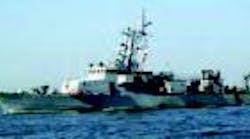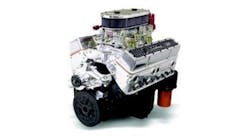The editors responded, "Of course there will be plenty of Americans whose ire will be aroused by this and who will be for going right over to Hamburg and other German ports and giving these conceited Germans a practical demonstration of the ability of our naval guns . . . This would be very rude, however."
Metric "agitation"
That's how editors described efforts to adopt the metric system in the U.S. in the April 28, 1904, issue. This was in reference to a poll of members of the National Association of Manufacturers. "While some crumbs of comforts may be derived from it by those who believe in the advisability of at least trying to make some progress toward the ultimate adoption of the metric system, the vote is very heavily against it."
Editors believed the furor over the metric system would eventually subside until the development of international trade forced the issue, like if American machine tool builders lost business to overseas competitors that offered machine tools constructed to the metric system.
Radioactive machining
Selling to the Soviets
The U.S. and England were negotiating what machine tools could be sold to Russia and her satellite countries. A report in the April 26, 1954, issue said the negotiations were precipitated by the actions of British builders seeking to fulfill Russian orders. Germany and France were also interested in selling tools behind the Iron Curtain.
According to the editors, some observers were predicting that the Germans and the British had the most to gain. The reason? "The Russians will place the orders in the countries in which they stand to gain the most politically. The United States would be excluded on that basis."

